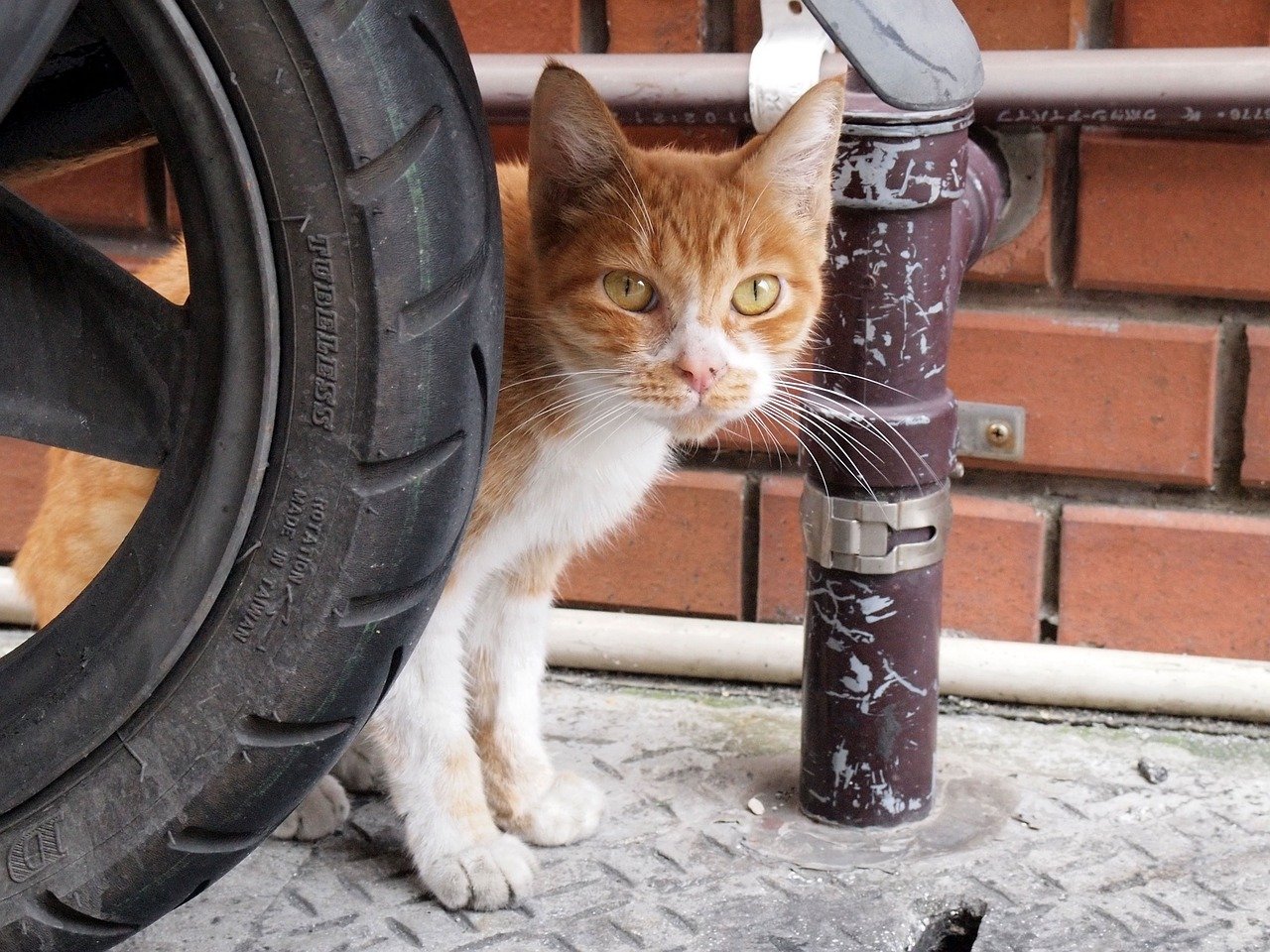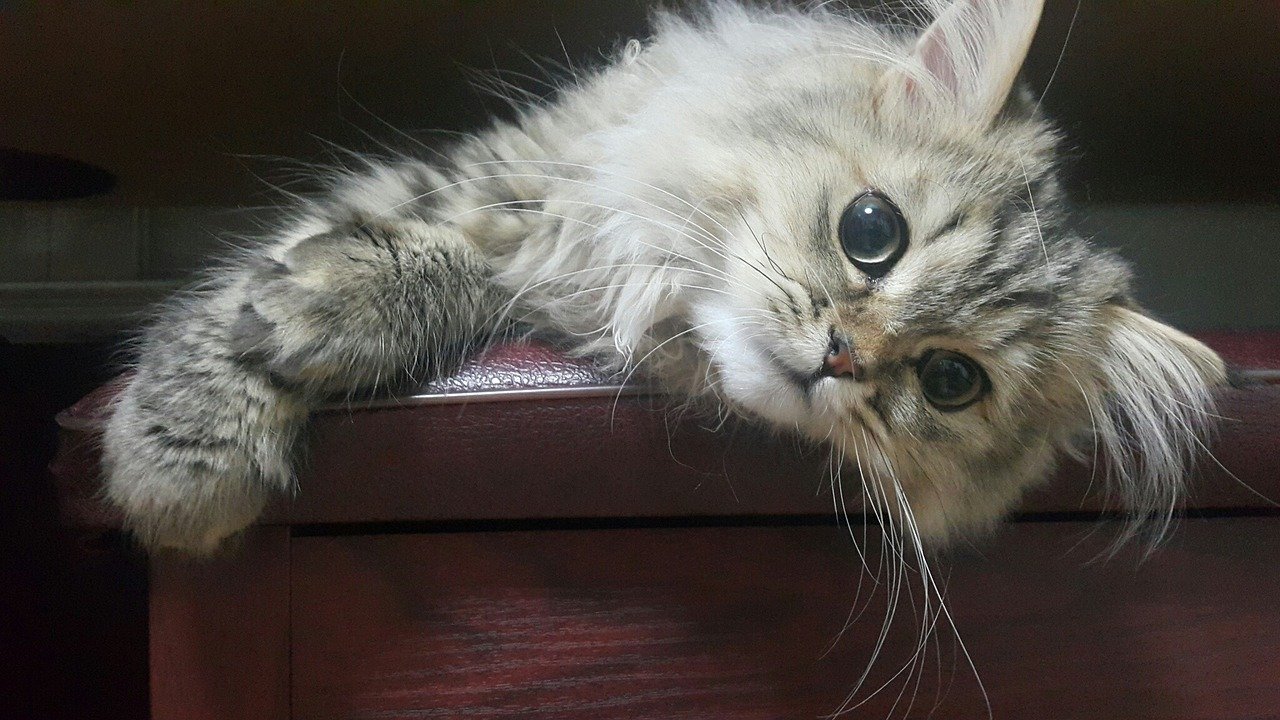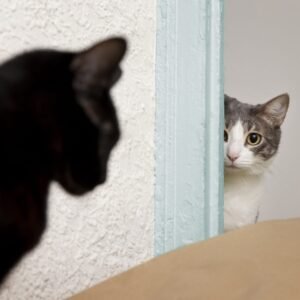If you’re a cat owner, you likely know How to calm a Persian cat when they are hyper and energy outlets. But if you are new to adopting a cat, you must learn how to calm your aggressive cat or tips to calm your Persian cat.
Sometimes cats behave crazy jumping from furniture to another, sprinting from one corner to another, and playing and fighting with other household pets. These signs are alarming for cat owners. So in this article, we dive deep into the behavior of cats and how to calm a Persian cat.
Tips To Calm Your Persian Cat
Here are some tips that might be helpful for you to calm your cat
- FIND THE REASON BEHIND YOUR PERSIAN CAT AGGRESSIVENESS: First, you have to recognize the reason your cat is behaving like this. Why does your cat start howling and hissing at you when you come near to him/her? Whether they are afraid of anything or they have any underlying disease. Your cat must have something like pain, infection, and any safety problems. Sometimes cats change their behavior if you have hurt them.
- WALK SLOWLY AND TALK SWEETLY WITH YOUR CAT: Reach your slowly and calmly and never shout in front of them, they don’t understand what you are saying but your body language. So talk to your cat with sweet words as with their names and treats names.
- PAY ATTENTION TO THEM: Maybe your cat shows aggressiveness because you don’t pay attention to them. Annoyance behaviors, such as jumping on the counter and excessive meowing, begin when your Persian wants your attention. Give them proper attention, cuddles, and outdoor playing.
- GIVE THEM INTERACTIVE TOYS AND TREATS: Provide them with their favorite toys and treats, because food and toys can change your cat’s mood instantly.
- GIVE THEM THEIR PERSONAL SPACE Cats are independent creatures, and most probably Persian cat hates loud music and noisy environments. Cats want their personal space, they want to live in isolation. Don’t be too much clingy towards them all the time, give them time to explore their surroundings.
- REGULAR CHECKUPS TO AVOID ANY UNDERLYING DISEASE: Make sure that your cat is physically and mentally healthy. Regular check-ups and vaccines are essential for your cat. Sometimes in pregnancy, cat starts odd behavior, but give them their comfort zone and proper nutrition. Underlying disease is one of the major cause of your Persian cat for any aggressiveness.
- GIVE THEM THEIR PERSONAL FOOD BOWLS AND LITTER TRAYS: Cats don’t like to share their food bowls, litter trays, and toys with other cats, that may also be one reason why your cat behaves like this.

How to Calm a Cat for Grooming
If you have a cat, you know that you’ll need to do at least a certain amount of grooming occasionally. Some cats are water lovers but as the owner of a Persian cat that is no more.
Signs that your cat is uncomfortable include:
- Flicking, rotating, or flat ears
- Swishing tail
- Licking lips
- Freezing in place
- Growling or hissing
- Attempting to bite or scratch
You may also like: https://persiancatinfo.com/how-to-tell-if-your-cat-is-a-persian/
The 6 Tips and Seductions for Calming a Cat for Grooming
Here are a few ideas to try to make this whole process easier.
- Start Slowly
- Build a New Routine
- Pay Attention to Their Body Language
- Use a Pheromone Spray
- Consider a Sedative
- Use a Professional Groomer
You may also like: https://persiancatinfo.com/how-big-does-a-persian-cat-get/
How to Calm a Cat at Night
Have you ever wondered why your cat sleeps through the day and then, just when you’re about to go to bed, thinks your toes, ears, and every toy in the house are the funniest thing ever?
A cat’s sleeping area plays a crucial role in promoting relaxation. Providing a comfortable and safe space while minimizing external disturbances is essential.
Reducing External Stimuli Dimming lights, minimizing noise, and ensuring a cozy cat bed are key elements in creating an environment conducive to a calm sleep.
Interactive Toys for Nighttime Engagement
Choosing the right toys for nighttime engagement is crucial. Certain toys promote mental stimulation and serve as an effective means of calming a cat.
The Role of Interactive Play: Interactive play provides physical exercise and engages a cat’s mind, contributing to a sense of fulfillment and tiredness.
How to Calm a Cat with Anxiety
Behavioral Changes: Observing alterations in your cat’s behavior, such as increased vocalization, aggression, or hiding, can signal underlying anxiety.
Physical Symptoms: Physical signs, such as changes in appetite, excessive panting, or digestive issues, can also be linked to heightened stress levels in cats
- Calming Toys and Enrichment
- Regular Exercise and Play
- Calming Music and Sounds
- Pheromone Therapy
- Massage and Gentle Petting
- Herbal and Natural Remedies
- Behavior Modification Techniques
- Diet and Nutrition
How to Calm a Cat for Travel
Cats’ facial expression shows how they feel and what they want from their owners.
SIGNS CAT SHOWS THAT THEY ARE STRESSED WHILE TRAVELLING
- Excessive vocalization such as howling or meowing.
- Panting. It may look cute, but if your cat is panting like a dog, it could be a sign they are stressed.
- Aggression such as scratching, hissing, or biting.
- Excessive drooling or licking of lips.
Reduce Cat Stress on a Road
Preparing for the Journey
Choosing the right carrier is essential. Gradually introducing the carrier to your cat and familiarizing them with the car environment helps ease their apprehension.
Creating a Comfortable Travel Environment
Place familiar items in the carrier, use calming pheromones, and maintain a consistent temperature in the car to create a comfortable and secure space for your cat.
Planning Breaks and Pit Stops
Frequent breaks allow your cat to stretch and relax. Identify suitable rest areas to provide a safe environment for your feline friend.
Nutrition and Hydration
Manage your cat’s feeding schedule, ensuring they are well-fed before the journey. Keep access to fresh water throughout the trip to prevent dehydration.
Safety Measures
Secure your cat in the car using appropriate harnesses and seat belts designed for feline travel, ensuring their safety during the journey
How to Calm a Scared Cat
Cats can be quite sensitive creatures, and when they’re scared, it’s essential to approach them with care and patience.
- Create a Safe Space:
- Provide a quiet and secluded area where your cat can retreat. This could be a cozy corner with their bed, toys, and a hiding spot.
- Avoid Sudden Movements:
- Move slowly and avoid making sudden gestures or loud noises. Sudden movements can startle a scared cat and escalate their anxiety.
- Speak Softly:
- Use a gentle and soothing tone when speaking to your cat. Soft, calm words can help reassure them that they are safe.
- Offer Treats or Favorite Toys:
- Use treats or toys that your cat loves to associate positive experiences with their environment. This can help shift their focus from fear to enjoyment.
How to Calm a Cat with Zoomies
As the owner of a Gray Persian cat, she is always active at dawn and dusk. If you play with your cat during the day or during her playtime then less likely she will wake you up with their nighttime zoomies
Imagine sleeping at night after a whole day’s work but you close your eyes and listen to noise from the living room and on your bed.
You go out to investigate, only to find your cat racing in circles, using your furniture as an obstacle course. Relax this is natural in cats.
The Importance of Calming a Cat with Zoomies
Zoomies may seem like harmless fun, but there’s more to this behavior than meets the eye. Constant zoomies can have health implications for your cat, leading to increased stress levels and potential behavioral issues.
It’s crucial to address this behavior to ensure your cat’s overall well-being and happiness.
What to do about them
- Spread out playtime
- Mix up the toys
- Small meals
- Petting and affection
- Avoid negative reinforcement
FAQs
How do you calm down a Persian cat?
Ensure their environment includes lots of enrichment like scratching posts, hiding places, and toys. Make sure your cat always has a quiet and safe space where they can retreat to if they feel stressed. Their cat basket or a couple of boxes in a quiet corner will work.
Why is my Persian cat so hyper?
Most cats tend to display this type of hyperactivity as a measure to alleviate boredom or to release pent-up energy. When pets spend too much time alone in the house, or after a long period of rest, they need to move and can do so frantically.
How do you calm a hyperactive cat?
Fortunately, there are some measures you can take to help curb an overactive kitty:
- Tire your cat out by keeping them up during the day. …
- Increase mental activity to make your cat sleepy. …
- Take your cat for walks on a leash and harness. …
- Consider getting another cat. …
- Try these nighttime solutions.
How do I get my Persian cat to sleep?
Play with your cat before their last meal of the day.
This is followed by grooming and then a period of rest. Recreating this scenario by playing with your cat can regulate their energy levels to meet yours. Use interactive toys like wand toys or hiding toys to hunt to tire your cat out.
CONCLUSION
At the end we can say that if your cat starts behaving odd and showing aggressiveness towards you, first slowly and calmly walk towards them , start to call their name sweetly, don’t shout on them, make sure that they have noise free environment, their food bowls and litter trays are clean, make sure that your cat is healthy, make sure that your cat eats balanced food and give them their personal space.
Leave any information how you calm your Persian cat. We will be glad to share your information as it might be helpful for other.







